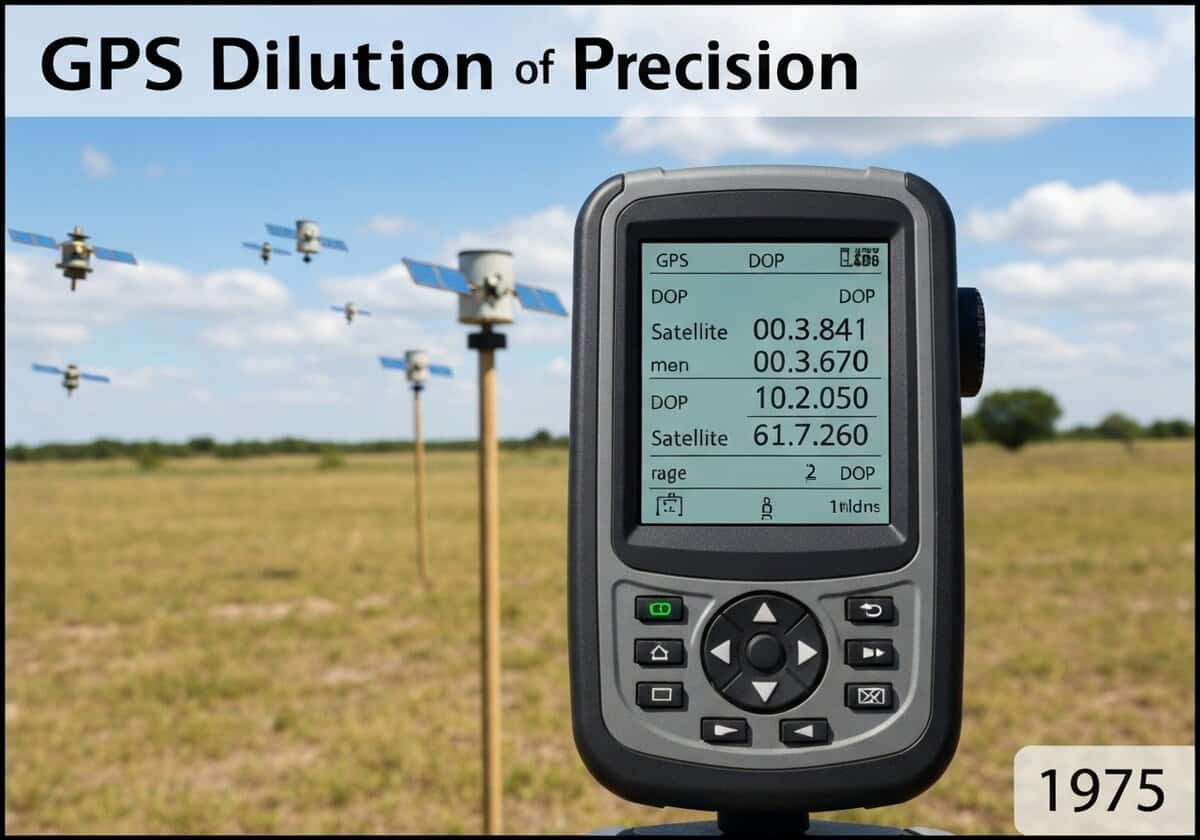The Dilution of Precision (DOP) is a metric that quantifies the effect of satellite geometry on GPS accuracy. A lower DOP value indicates better accuracy. When satellites are widely spaced in the sky, the geometry is strong, and DOP is low. When satellites are clustered together, the geometry is weak, DOP is high, and small errors in pseudorange measurements are magnified into large position errors.


























